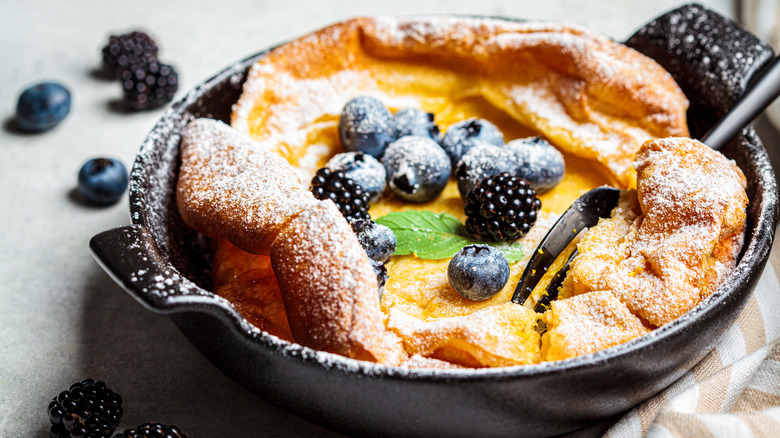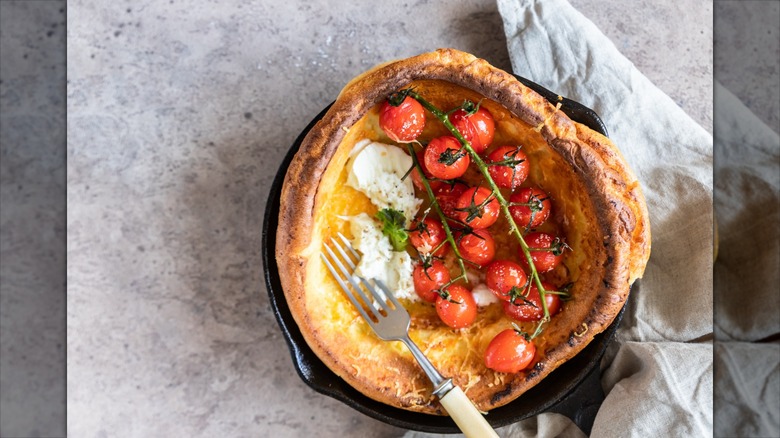The Cooking Method That Sets Dutch Babies And Pancakes Apart
With restaurant prices soaring due to inflation, it's not a bad time to learn some new recipes or culinary tricks that make cooking at home feel a little more special than normal. Not everyone can be expected to produce Michelin star quality fare, but when it comes to meals or foods involving simple ingredients, the cost saved from preparing them yourself might make it worth skipping the special service at your local eatery.
That being said, if you are looking to save a couple of coins by passing on weekend brunch invites, that doesn't mean you can't also have a fabulous, fun breakfast at home. With a few simple ingredients, you can produce a variety of breakfast meals. While making yourself a stack of traditional American pancakes is an impressive feat in and of itself, you could also try your hand at making a very silly-sounding but delicious-tasting pancake variation: the Dutch baby.
Dutch babies get baked in an iron skillet
What exactly is a Dutch baby? Taste of Home explains that a Dutch baby is a baked pancake of German origin. Unlike its American pancake cousin that gets fried stove-top in a pan or on a griddle, Dutch babies are baked in an iron skillet in the oven, according to Atlas Obscura. Although they both require basically the same ingredients, the different cooking methods produce dramatically different results.
To make a Dutch baby, Taste of Home suggests pouring all of your mixed ingredients, including eggs, flour, milk, and butter, into a buttered iron skillet, then baking it until it puffs up and is set. After your Dutch baby is finished baking, don't be worried when it slowly starts to collapse after it's removed from the oven. The slow deflation of a Dutch baby is supposed to happen, per Atlas Obscura, and actually creates a crater-like shape ideal for holding any delicious toppings of your choice.
Treat yourself to a special, affordable breakfast and make yourself a Dutch baby!

